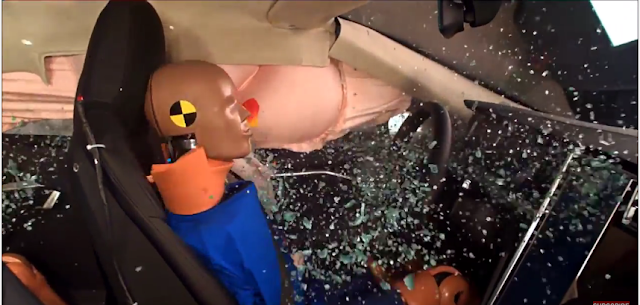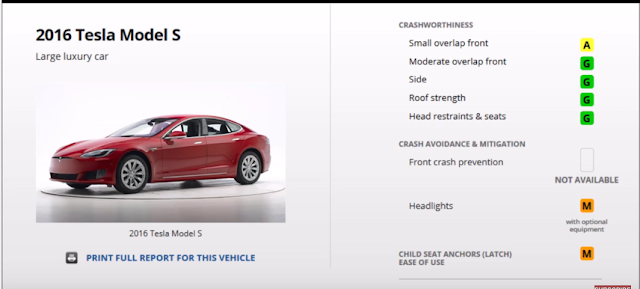
2020 Tesla Model X and 2020 Porsche Taycan - Crash Safety Tests Results
The stand-out performer of this round is undoubtedly Tesla’s Model X, scoring 94 percent for Safety Assist, the same as the Model 3 scored early this year.
The passenger compartment of the Model X remained stable in the frontal offset test. Dummy readings indicated good protection of the
knees and femurs of the driver and passenger.
Tesla showed that a similar level of protection would be provided to occupants of different sizes and to those sitting in different positions. Protection was rated as good for all critical body areas for the driver.
This was also the casein the the full-width rigid barrier test, and protection was good or adequate for the rear passenger. In both the side barrier and the more severe side pole tests, protection of all critical body areas was good and the car scored full points in both of these tests.
Tests on the front seats and head restraints demonstrated good protection against whiplash injuries in the event of a rear-end collision. A geometric assessment of the rear seats also indicated good whiplash protection.
The standard-fit autonomous emergency braking (AEB) system performed well in tests of its functionality at the low speeds at which many whiplash injuries occur, with collisions avoided in all test scenarios.
2020 Porsche Taycan Crash Safety Tests Results
The passenger compartment of the Taycan remained stable in the frontal offset test. Dummy readings indicated good protection of theknees and femurs of the driver and passenger.
Porsche showed that a similar level of protection would be provided to occupants of different sizes and to those sitting in different positions.
In the full-width rigid barrier test, protection of all critical body areas was good or adequate for both occupants, with the exception of the rear passenger's chest, for which dummy readings of compression indicated a marginal level of protection.
In the side barrier impact, protection of all critical body areas was good and the car scored full points in this tests.
In the more severe side pole test, protection of the chest was adequate and that of other body areas was good.
Tests on the front seats and head restraints demonstrated marginal protection against whiplash injuries in the event of a rear-end collision. A geometric assessment of the rear seats also indicated marginal whiplash protection.
The standard-fit autonomous emergency braking (AEB) system performed well in tests of its functionality at the low speeds at which many whiplash injuries occur. However, the Taycan was not awarded the points for these tests as good dynamic performance in the front seats is a prerequisite for AEB scoring.





















